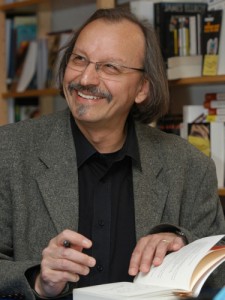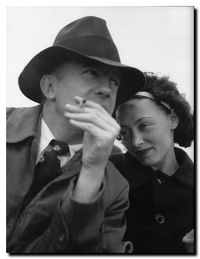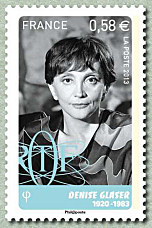Alan Morris
University of Strathclyde
To launch his new collection, “Sur le fil,” whose aim is to feature “novels in which the destiny of a poet meets History with a capital H,”[1] the publisher and author Bruno Doucey made what was perhaps an obvious decision: as a companion to his own book on Max Jacob,[2] he would invite Didier Daeninckx to pen a work as well. Daeninckx was an excellent choice, for a variety of reasons. Firstly, although he made his name in the roman noir (before extending his range to more mainstream fiction), he has a long-established liking for poetry.[3] Secondly, he has an equally enduring interest in history: well aware that numerous sensitive issues — relating principally to French colonialism, the Occupation, World War I and the Paris Commune — have been swept under the carpet, he has constantly, and provocatively, challenged “official” accounts of the past and their obfuscations. Thirdly and finally, Daeninckx is one of the most successful and visible writers on the contemporary French literary scene, so having him contribute would help to advertise the new series. When approached, Daeninckx readily accepted, and he did not have to look far for his subject. He simply had to turn, as he had in many previous stories, to his own background for inspiration: his grand-father once bought a plot of land — soon to become the family home — from a certain Eugène Grindel, whose son was later to achieve fame as the poet Paul Éluard. Daeninckx knew that, during the Occupation, Éluard had hidden in the asile (asylum) in Saint-Alban-sur-Limagnole to escape from the Gestapo. He similarly knew that this particular story (with the resulting production of new poems) was not widely known, which was yet another incentive for him to tell it; so tell it he did.
The result is Caché dans la maison des fous (2015). This relatively short text is in many ways an atypical novel by Daeninckx. Apart from the odd flashback, the chronology is virtually linear, and there is none of the usual to-ing and fro-ing between the past and the present, because there is no investigating detective. There are — of course — a number of mysteries, but these are cleared up quite quickly, and there is no central puzzle to solve in the dénouement. The end of the story is, in fact, not a traditional conclusion at all, but rather a reproduction of Éluard’s poem, “Le Cimetière des fous,” the last two words of which are, appropriately, “without reason.
Daeninckx’s novels always display an impressive knowledge of past events, and in this respect Caché dans la maison des fous is very much in tune with its predecessors. As ever, we get a plethora of period details that give the reader a feel for life in France during the Occupation: the requisitioning by the Germans; the restrictions, the shortages and the rationing; the black market; the gas-driven transport; the constant surveillance, the searches and the round-ups; and the need to adopt aliases and to play roles. However, perhaps because of the aim of the collection, the recourse to History now seems stronger than ever before.
The appearance, atmosphere and daily life at the (real) Saint-Alban asylum in the early 1940s are all here meticulously conveyed, thanks to Daeninckx’s typically extensive preparatory research, which included — as it always does — a visit to the site and the interviewing of surviving witnesses. Yet the hospital is not merely background scenery. Daeninckx has said that, in his books in general, his décors tend to be in harmony with his characters,[4] and this is certainly the case in Caché dans la maison des fous. Saint-Alban and the surrounding area is “the world’s dead end” (26), and as such represents a fitting destination for the 1,100 social outcasts and staff it houses.
 The patients, the so-called “mad people,” are the text’s most conspicuous outsiders, but there are others as well. Himself a rebel from a family of rebels — his ancestry is marked by anarchism, left-wing activism and desertion from armies — Daeninckx has confessed to his abiding interest in “rebellious characters […] who demonstrate that it is possible for things to change.”[5] Such are the protagonists in this novel and, like the hospital at Saint-Alban itself, and as the post-narrative “What became of them?” biographical section suggests, they have just as transparently been drawn from real life (as indeed, seemingly, have all of the dramatis personae).[6]
The patients, the so-called “mad people,” are the text’s most conspicuous outsiders, but there are others as well. Himself a rebel from a family of rebels — his ancestry is marked by anarchism, left-wing activism and desertion from armies — Daeninckx has confessed to his abiding interest in “rebellious characters […] who demonstrate that it is possible for things to change.”[5] Such are the protagonists in this novel and, like the hospital at Saint-Alban itself, and as the post-narrative “What became of them?” biographical section suggests, they have just as transparently been drawn from real life (as indeed, seemingly, have all of the dramatis personae).[6]
The first of these leading-actors-cum-misfits to appear is Denise, later revealed to be Denise Glaser, the future inventor of the iconic 1960s French TV pop programme, Discorama. As the narrative begins, she is dropped off at a station and catches a train (reflecting the fact that Daeninckx, as is his wont, is taking his readers on another, albeit non-spatial, journey — back into the past, through Time, History and Memory). She is soon revealed to be both Jewish and a Resister, hence an outsider twice over. This is why she is heading for Saint-Alban — to seek relative safety there (the asile throughout is an asylum in both senses of the word: a psychiatric hospital and a refuge). Her arrival in her new, alien surroundings, allows her to act as our eyes, and her many discoveries about the institution simultaneously lead to our own. Insofar as the novel has a plot, it consists of a sequence of encounters and the depiction of daily tasks performed within the asylum, as well as the risks taken to help the Resistance.
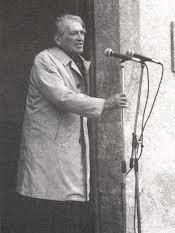
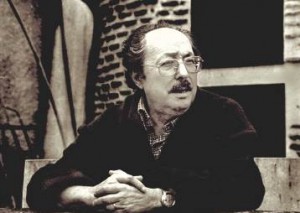
Figure 1: Bonafé and Tosquelles. Source: http://www.forumpsy.net/t635-les-psychotherapies-institutionnelles-annabelle-beaupretre
She and we soon encounter the two key doctors in the hospital, both of them rebels in their own right: Lucien Bonnafé and François Tosquelles. The former was given a suspended sentence in 1934 for participating in a Communist demonstration, but he also mixed with a variety of Surrealists, who were no less — if more artistically — heretical. Tosquelles, for his part, is really Francesc Tosquellas, a Catalan anti-Stalinist but “non-Trotskyite” who “was almost shot by the orthodox communists before he was condemned to death by Franco’s henchmen” (40). The doctors share with Denise their views on modern psychiatry, thus informing the reader about some disgraceful practices that they have abolished.
After these two early encounters, Denise makes the acquaintance of a mysterious couple, who are soon unmasked as the apparent star of the story (presumably this is why the title has Caché rather than Cachés), Paul Éluard, and his wife Nusch. Although nothing in the way they look marks them out as fugitives — a good example of the theme of appearance/identity in the text — refugees in hiding is precisely what they are, for Éluard, too, is a rebel, using his poetry as an act of resistance.
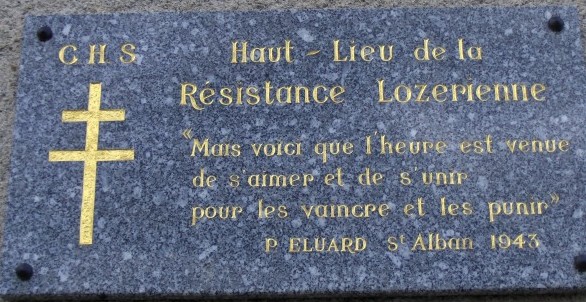 This intense focus on the real, added to Daeninckx’s highly committed, non-conformist approach, means that, like so many of his previous texts, Caché dans la maison des fous is strewn with unsettling historical details that various authorities would prefer not to recall. These facts are often only mentioned in passing, but cumulatively, they bear the mark of an author who, by his own admission, determinedly “writes against” — against forgetfulness, and against those in power with their sanitised versions of history.[7] Understandably, given the temporal setting, the majority of the unconventional revelations relate to World War II and the Occupation. Readers are reminded (or perhaps actually informed) that there was a French concentration camp near Cahors and Montauban — Septfonds — where the prisoners died of “hunger, septicaemia and especially despair” (40). There are mentions of the assistance that the French police gave to the Germans (66, 94), and of the large number of anonymous letters sent denouncing fellow citizens (thirty a day on average, to one small, local town hall — 74, 97-98). There is an intriguing reference to the arrival in Rodez of “Azerbaijani volunteers in the Wehrmacht” (99). Finally, there is a sad — and, for many no doubt, totally revelatory — illustration of Vichy’s general policy regarding psychiatric hospitals (24-25, 106), a policy that the author has concisely summarised elsewhere: the regime stopped subsidising the sector, with the result that 45,000 patients died “of famine or illness.”[8]
This intense focus on the real, added to Daeninckx’s highly committed, non-conformist approach, means that, like so many of his previous texts, Caché dans la maison des fous is strewn with unsettling historical details that various authorities would prefer not to recall. These facts are often only mentioned in passing, but cumulatively, they bear the mark of an author who, by his own admission, determinedly “writes against” — against forgetfulness, and against those in power with their sanitised versions of history.[7] Understandably, given the temporal setting, the majority of the unconventional revelations relate to World War II and the Occupation. Readers are reminded (or perhaps actually informed) that there was a French concentration camp near Cahors and Montauban — Septfonds — where the prisoners died of “hunger, septicaemia and especially despair” (40). There are mentions of the assistance that the French police gave to the Germans (66, 94), and of the large number of anonymous letters sent denouncing fellow citizens (thirty a day on average, to one small, local town hall — 74, 97-98). There is an intriguing reference to the arrival in Rodez of “Azerbaijani volunteers in the Wehrmacht” (99). Finally, there is a sad — and, for many no doubt, totally revelatory — illustration of Vichy’s general policy regarding psychiatric hospitals (24-25, 106), a policy that the author has concisely summarised elsewhere: the regime stopped subsidising the sector, with the result that 45,000 patients died “of famine or illness.”[8]

Figure 2 source: www.france-handicap-info.com/1939-45: un historien propose un mémorial pour toutes les victimes civiles, dont les déficients intellectuels
Daeninckx moves away from the early 1940s as he delves into “the fault lines of collective memory.”[9] Giving Tosquelles’ background, the author inevitably broaches the subject of Spanish history, and especially the Spanish Civil War (38-40), evoking the abandonment, for example, of Republican Spain by France’s own Popular Front government (86). This excursion into another time and place does not last long. The focus remains on Saint-Alban and the Occupation. Daeninckx depicts the asylum as rife with resistance, which manifests itself in several forms. Most visibly, there is resistance to the occupiers. Bonnafé has patient records falsified to get more food from the authorities (106), and allows a badly wounded maquisard (rural guerilla) to be treated by his surgeon (85). He is also hiding refugees of all stripes, including, as we saw, those two other Resisters, Denise (Glaser) and Paul Éluard (whose poetry has “taken to the maquis,” (94) and thereby resonates with Daeninckx’s own “writing against”). In fact, the asylum is like the centre of a spider’s web, linking outwards to other, more distant resisters: the mayor of Saint-Alban, who supplies fake documents (97), the printers in Saint-Fluor, who publish the poetry Éluard writes at the hospital (102), and the railway workers, who transport the poems to Paris (103). By recalling these acts and those who performed them, Daeninckx is doing what he often does in his writings focused on the Second World War — combining his critique of collaborators with praise for those who stood up to oppose them. This homage is overtly articulated when Daeninckx describes the burial of the now-dead maquisard (97), but it is also implicit in his readiness to name Resisters who had no direct contact with Saint-Alban, such as Lucien Legros (94-95), or the students from the University of Clermont-Ferrand (22-23).

Figure 3: Aimable Jayet (1949) at Saint-Alban. Source: http://www.artbrut.ch/fr/21004/1135-5/auteurs/jayet–aimable-
A second manifestation of resistance at the hospital — and a further aspect of the novel establishing deliverance and freedom as major themes — is the commitment to unorthodox psychiatric treatments. Well into the 1930s, the asylum’s patients were treated inhumanely. The first female head introduced reforms (the role and status of women is another issue tacitly raised by the text), and Bonnafé and Tosquelles are building on this, attempting to “free people from their mental prisons,”[10] through creative innovations. The children construct their own jigsaw from painted cardboard (107); among other skills, adults make raffia sandals (52-53), and the established rules for card games are reinvented by the doctors to fool the local tobacconist (47-48). Above all, art is the principal therapy. It also marks out the broader Saint-Alban community. We are told in detail about Bonnafé and Tosquelles’ interest in films and theatre (69); Éluard is of course a poet; Jacques Matarasso is a photographer, and then there are two (again real-life) patient-artists: Aimable Jayet, who “expresses the violence of the world that is inside him through his words, his syntax,” (56) and perhaps more notaby, Auguste Forestier, a sculptor who uses rubbish as his raw material, and who will ultimately inspire Jean Dubuffet’s “art brut” (outsider art, literally rough/raw art).
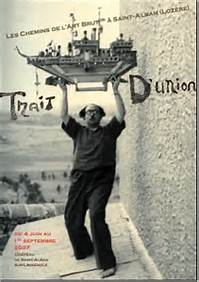
Figure 4: Jacques Matarasso photograph of François Tosquelles holding a boat by Auguste Forestier. Source: www.capnantes.fr/l’honneur des poètes.
By depicting these creative talents, all of them living together in an asylum, Daeninckx is able to meditate on the links between art and insanity, and between madness and poetry in particular. This is not surprising, given that Paul Éluard was himself fascinated by lunacy. His first published poem was entitled “The Madman Speaks” (89); as a Surrealist, he “made a foray into the empire of the mad” (89); he reveals a long-standing curiosity for “psychopathological art” (109), and we see him listening to the female patients whose portraits he will eventually depict in one of his future books (91).
Daeninckx goes on to generalise. “All men are mad,” Tosquelles suggests (40), and when the asylum is described as “a place which gives shelter from the insanity of the world” (57), normality really does seem to have been turned on its head. This in turn chimes with the author’s broader approach to social issues. “Nothing and nobody is situated outside society. Exclusion is not a state, but a process,” he has insisted.[11] This is why Caché dans la maison des fous is also a condemnation of society’s eagerness to shut away those who are different, like the young children in the institution, who have been “rejected, […] judged once and for all and doomed to see their lives slowly suffocated behind the walls of the hospital” (77).[12]
![Figure 6 Gérard Vulliamy illustration in Souvenirs. Source: http://catalogue.drouot.com/ref-drouot/lot-ventes-aux-encheres-drouot.jsp?id=980800 [Vulliamy was Éluard’s son-in-law]](http://h-france.net/fffh/wp-content/uploads/2016/04/image013.jpg)
Despite the heavy presence of History and “the real” in Caché dans la maison des fous, the text, as we would expect from a writer of Daeninckx’s calibre, is also strikingly literary. A key element of this literariness is the fact that the book reflects the processes that Daeninckx used in its creation. Thus, Denise looks after Saint-Alban’s library and its archives, the asylum’s stored memories; her work involves indexing and cataloguing (32, 44-45); she reads all types of texts (29, 58, 105); a brochure in the library has been annotated by a “graphomaniac” (29, 31); Éluard himself makes notes prior to writing (91), and, last but not least, there is a visit to a print works. Linked to these implicit or explicit inscriptions of reading and writing in the narrative are the recurrent references to a whole host of real literary figures and to their books. Even more notably, the text is packed with quotations. This recourse to citations of all sorts may well allow  Daeninckx to bolster the “reality effect,” but it simultaneously allows him to foreground art and creativity. What is more, as Gianfranco Rubino has noted,[13] collage was favoured by the Surrealists — the self-same Surrealists who actually feature in Caché dans la maison des fous. It is not for nothing, then, that Denise at one point walks literally in Éluard’s footsteps on the asylum’s grounds, (113) nor that Daeninckx got much of his information (and presumably his title) from Éluard’s recollections of his several months at Saint-Alban, Souvenirs de la maison des fous.[14]
Daeninckx to bolster the “reality effect,” but it simultaneously allows him to foreground art and creativity. What is more, as Gianfranco Rubino has noted,[13] collage was favoured by the Surrealists — the self-same Surrealists who actually feature in Caché dans la maison des fous. It is not for nothing, then, that Denise at one point walks literally in Éluard’s footsteps on the asylum’s grounds, (113) nor that Daeninckx got much of his information (and presumably his title) from Éluard’s recollections of his several months at Saint-Alban, Souvenirs de la maison des fous.[14]

Figure 5 Gérard Vulliamy illustration in Souvenirs. Source: http://catalogue.drouot.com/ref-drouot/lot-ventes-aux-encheres-drouot.jsp?id=980800 [Vulliamy was Éluard’s son-in-law]
This double-level demonstration of a familiar methodology is one reason why Caché dans la maison des fous may appeal to historians, but there are many more besides. The portrayal of “real” people and a “real” past; the depiction of the Occupation, with its Resisters and Collaborators; the way society treated those outside the mainstream; Daeninckx’s belief that the past is relevant to the present; the refusal to let forgetfulness triumph over memory, and the very interrogation of narrative boundaries (how “real” — or how fictional — are historical accounts?) — all of these may be of interest.
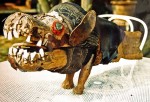
Figure 6 bête du Gévaudan by Forestier owned by Éluard. Source: http://lepoignardsubtil.hautetfort.com/tag/Jean+Oury
Does this mean that the text can be used in the classroom? In response, as a bibliophile, I must mention that this edition was not immune to production problems (I have seen a copy with pages 33-40 inserted upside down), so it might be better to wait for the paperback edition and also, hopefully soon, an English translation. On the positive side, the novel is certainly short enough to be read in one sitting, and Daeninckx is a talented writer who always tells a good story, often while challenging his readers to reflect on the nature of the narrative, as is the case here. But the main attraction, for teacher and student alike, will probably be the light shone on a relatively unknown aspect of the Occupation — the multi-faceted resistance at the hospital of Saint-Alban, where some of the key players created what was to become modern psychiatry. Thanks to this specific focus, Caché dans la maison des fous will be particularly welcomed by historians of medicine at all levels, all the more so in that its merits have been formally recognised by the relevant medical professionals.[15] In fact, such is the revelatory nature of Daeninckx’s work in this area, and such is its sympathetic treatment of “madness,” that, had Erasmus not got there first, it could very easily and very pertinently have been entitled: In Praise of Folly.
Didier Daeninckx, Caché dans la maison des fous (Paris: Éditions Bruno Doucey, 2015)
NOTES
- “Caché dans la maison des fous,” http://www.editions-brunodoucey.com/cache-dans-la-maison-des-fous [Accessed 18.3.16]. Here and throughout this review, all translations from the original French are my own.
- Bruno Doucey, Le Carnet retrouvé de Max Jacob (Paris: Éditions Bruno Doucey, 2015).
- See e.g. Thierry Maricourt, Daeninckx par Daeninckx (Paris: Le Cherche Midi, 2009), 24, 88, 97, 103.
- Maricourt, 43.
- Maricourt, 218.
- To appreciate Daeninckx’s use of history more fully, see for example Dominique Mabin and Renée Mabin, “Art, folie et surréalisme à l’hôpital psychiatrique de Saint-Alban-sur-Limagnole pendant la guerre de 1939-1945,” http://melusine-surrealisme.fr/wp/?p=1775 [Accessed 7.2.16].
- See for example Didier Daeninckx, Écrire en contre (Vénissieux: Paroles d’aube, 1997), 68, 97, or Maricourt, 236.
- Didier Daeninckx, Presentation of Caché dans la maison des fous, Franco-Irish ‘Crime Fiction’ Festival, Dublin, 2015, https://www.youtube.com/watch?v=ZZU8AUn1mC8 [Accessed 18.3.16].
- Maricourt, 118.
- https://www.youtube.com/watch?v=ZZU8AUn1mC8 [Accessed 18.3.16].
- Écrire en contre, 11.
- Cf. the dedication of the book to “the memory of Georges Daeninckx,” the novelist’s uncle. Georges suffered from mental illness, but was not institutionalised, so remained part of a caring and supportive family unit (Alexandra Schwartzbrod, “Capital de la douleur: les combats de Didier Daeninckx,” Libération, 19.6.15 http://next.liberation.fr/livres/2015/06/19/capital-de-la-douleur-les-combats-de-didier-daeninckx_1333276 [Accessed 6.2.16]).
- Gianfranco Rubino, Lire Didier Daeninckx (Paris: Armand Colin, 2009), 97.
- Paul Éluard, Souvenirs de la maison des fous (Paris: Pro Francia, 1946), with drawings by Gérard Vulliamy. Republished Paris, Seghers, 2012. For Daeninckx’s familiarity with this text, see Schwartzbrod.
- The book won the Prix de L’Autre Page 2015, a prize awarded by a jury composed of psychoanalysts.
